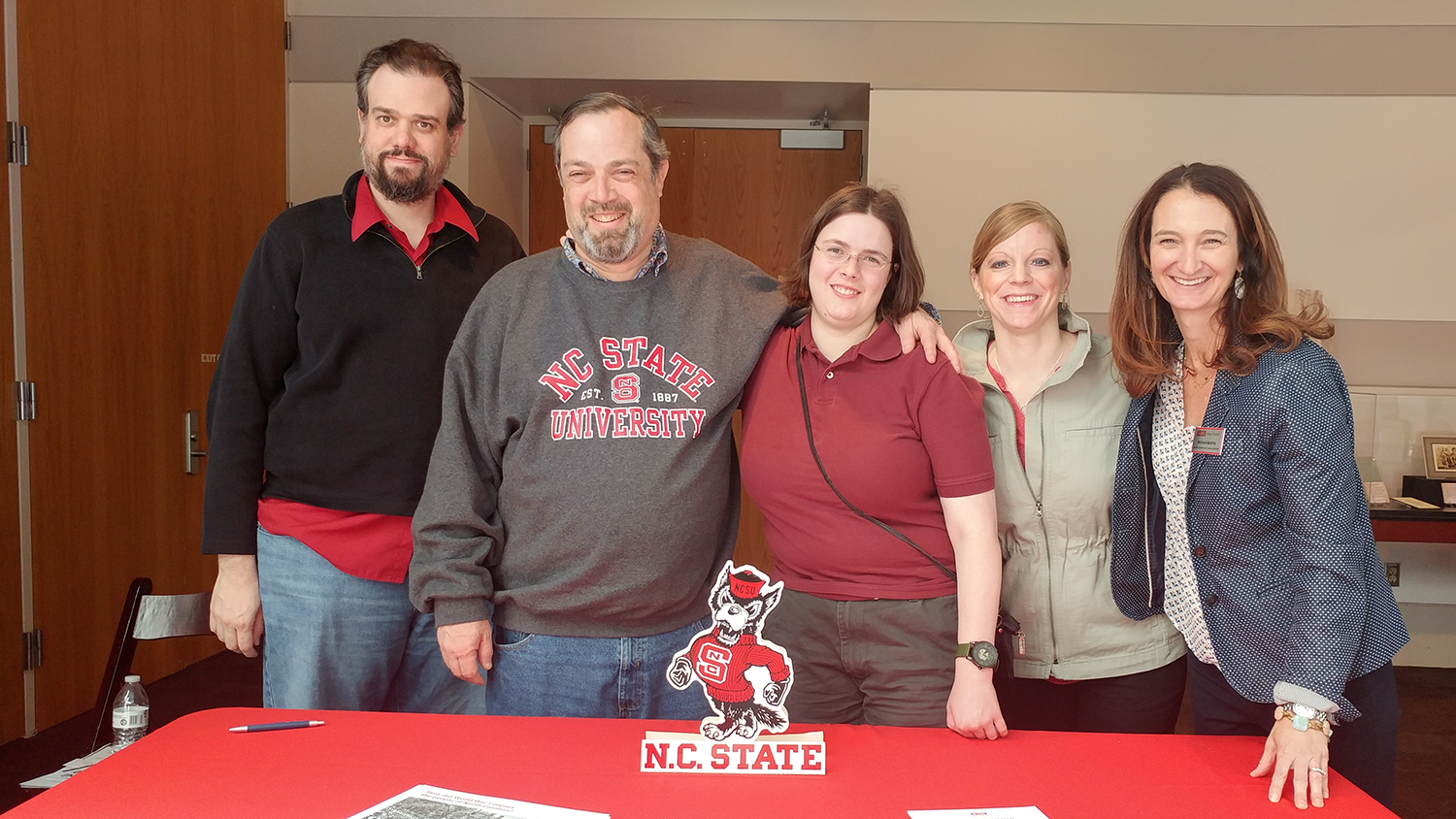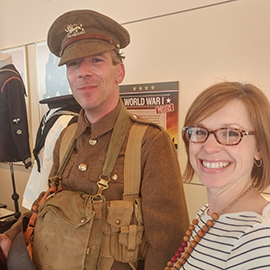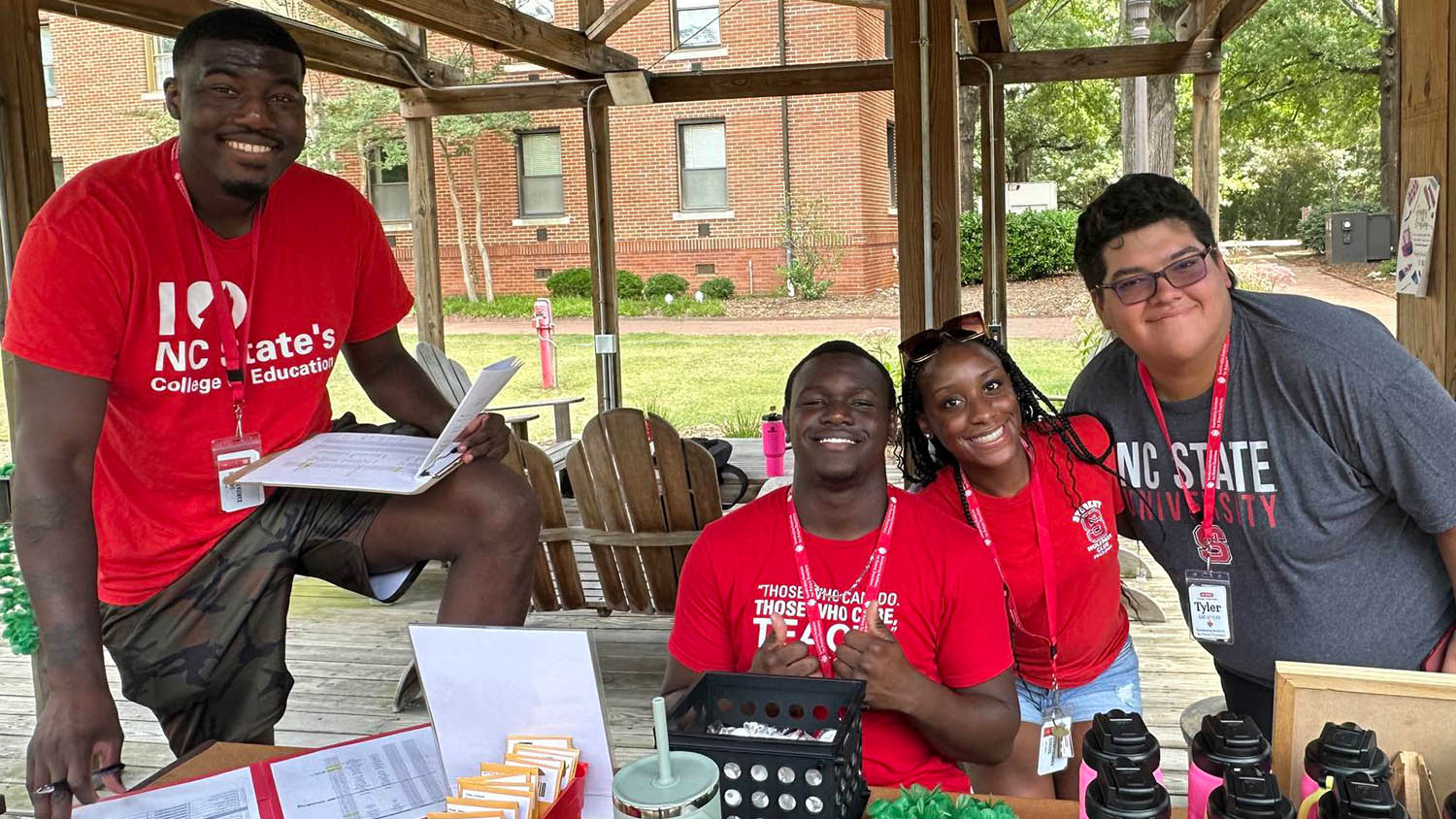Helping Social Studies Teachers Engage Students in Learning About World War I

Though World War I doesn’t garner the attention of World War II, the conflict played a major role in shaping the history of North Carolina and the nation. That’s one of the concepts Meghan Manfra hopes to pass on to teachers and their students who visit the North Carolina Museum of History’s interactive multimedia World War I exhibit that opened in April.
Manfra, an associate professor of social studies education in the NC State College of Education, worked with the museum to create resources about World War I’s impact on North Carolina for educators and students. What she learned, and hopes others learn along the way, focuses on the reach and historical impact of conflict.
Dig Deeper
“In retrospect, it is easy to think that World War I was bound to happen and the U.S. was going to join, but if [teachers and students] dig deeper into this, they see that a variety of different causes and choices led to this event,” said Manfra.
Various facets of World War I came to life for Manfra while working with the museum to create curriculum resources to supplement the exhibit, which features a lifelike trench and hundreds of artifacts focused on soldiers from the Old North State.
The resources include a website designed to equip teachers with the means to invigorate classroom learning and discussion on the causes and reach of World War I. In addition to photographic and print materials, inquiry-based lesson plans address questions such as “What were the experiences of soldiers in combat?” to help students understand what life was like during World War I from the perspective of an North Carolina doughboy. Teachers can also find lesson plans on the impact of African-American soldiers from the state, and the overall impact of World War I on the lives of North Carolinians.
“Our aim is to help teachers identify primary sources that will improve student learning about historical concepts,” said Manfra. “We want to impact teachers, who in turn will encourage students to ask historically relevant questions and spark their natural curiosity about the past. I hope that teachers can integrate lesson plans with lively discussions to deepen historical knowledge and understanding.”
 Manfra also notes that creating engaging professional learning materials and classroom resources helps to make a long-ago event relevant to today’s world.
Manfra also notes that creating engaging professional learning materials and classroom resources helps to make a long-ago event relevant to today’s world.
By studying World War I with materials developed in partnership with the College of Education and the museum, teachers and students get a more rounded view of the political decision-making processes that led to U.S. entry to the war. They can make sense of the past through their analysis of available historical evidence from the Library of Congress and the NC Museum of History. Educational materials and the museum’s exhibit work in tandem to create a sense of historical empathy by increasing understanding of the real human impact of World War I.
The partnership between the college and the museum began when the museum extended an invitation to Manfra to speak at a summer institute for North Carolina teachers.
“The museum maintains a wealth of resources, and they’re constantly looking for new ways to get them into the hands of teachers across the state,” said Manfra. “I wholeheartedly support this mission, and I’ve been helping them generate new ways to bridge those resources and classroom teaching.”
That bridge came in the form of a grant from the Library of Congress, which supported the ‘Connecting Carolina’ program, focused on social studies education through primary sources. The grant allowed Manfra and museum collaborators to bring World War I history to life for educators.
In 2016, they brought together social studies curriculum specialists from the North Carolina Department of Public Instruction and Wake, Durham, Mecklenburg and South Brunswick school districts to create professional development resources focused on the upcoming World War I exhibit. This summer, they will host a two-day institute for social studies teachers at the museum.
“Through this collaboration with the N.C. Museum of History, we really want to strengthen social studies education in the state, because ultimately this encompasses history, economics, social science and citizenship education,” Manfra said.
After the World War I exhibit closes in 2019, Manfra and her collaborators hope to follow up with teachers to review the impact of the Connecting Carolina program.
“Our aim has always been to provide high-quality, inquiry-based professional development and other materials that connect history and primary sources in the classroom,” said Manfra. “Through our World War I materials, we hope to work alongside social studies teachers in enriching their curriculum, and helping to instill a love of social studies learning in students.”
- Categories:


